Sleep is not an absence of consciousness. Sleep is a complex biological rhythm that restores your brain, your body, and your sense of self. When you are healing from anxiety, burnout, loss, or trauma, sleep is both a signal and a tool. It shows you how regulated your nervous system is, and it gives you the neurochemical conditions you need to recover. As you deepen mind body awareness, you can learn to read the messages that your sleep is sending and shape your evenings and mornings so that rest becomes a steady ally.
Why Sleep Matters for Emotional Healing
During sleep the brain consolidates memories, prunes unnecessary connections, and strengthens useful ones. That process helps you integrate what you are learning in therapy, in journaling, and in your daily experiments with new habits. Deep slow wave sleep supports tissue repair and immune function, while rapid eye movement sleep helps the brain process emotions and make meaning. People often notice that a difficult day feels more workable after a night of consistent sleep. That shift is not only psychological. Hormones, neurotransmitters, and inflammatory signals rebalance while you rest, which reduces reactivity and restores a sense of choice.
When sleep is insufficient or irregular, emotional healing slows. The amygdala tends to fire more readily, the prefrontal cortex tires early, and attention becomes fragile. Small stresses feel larger, rumination sticks, and patience thins. For someone who is trying to rebuild trust in the body, a string of restless nights can also trigger a discouraging story that says my body is against me. Reframing sleep as a partner and learning to communicate with it through awareness and routine can change that story.
The Nervous System Link
Your sleep quality reflects the state of your nervous system. The sympathetic branch prepares the body for action, while the parasympathetic branch settles you toward rest and repair. Emotional healing often involves helping the parasympathetic response become more available. Practices like slow breathing, gentle stretching, and mindful attention signal safety. Over time these practices help the body shift gears more smoothly between day time engagement and night time rest.
Think of this process as learning to coast. When you are coasting, you can feel momentum without forcing. Mind body awareness gives you a real time dashboard. You start to notice how caffeine lingers, how a hard conversation reverberates in your chest, how news at bedtime pulls your attention into the future, and how a warm shower lets your shoulders soften. With practice you become skillful at guiding yourself into coasting so that sleep has an easy path to arrive.
Reading Your Body’s Sleep Signals
Mind body awareness starts with observation. Spend a few evenings paying quiet attention to your body’s design. Notice the time when your energy naturally begins to dip. Watch for the first yawn, the heavy eyelids, the subtle cooling of hands and feet as blood flow shifts toward the core. Observe whether your mood grows tender or irritable as you near bedtime. These signals tell you when the window for sleep is opening. If you miss the window by pushing through with screens or tasks, you may catch a second wind and feel alert again. That alertness can mislead you into staying up while your nervous system stirs. The next night, begin your wind down earlier and ride that first wave of sleepiness to bed.
The Role of Light, Food, and Movement
Light is the strongest time setter for your circadian rhythm. Morning light helps your inner clock know when to be awake, and evening darkness helps it know when to release melatonin. A short step outside within an hour of waking and again in the late afternoon can provide a meaningful reset. At night, dimming indoor lights and reducing screen glare tells your body that rest is approaching.
Food and movement also set timing signals. Eating at consistent times and finishing larger meals a few hours before bed reduces the chance of digestive discomfort that can wake you. Gentle movement during the day improves sleep pressure, which is your body’s drive to sleep that builds up the longer you are awake. If intense exercise leaves you wired at night, experiment with earlier scheduling and balance it with a calming evening routine.
Evening Rituals that Invite Rest
Ritual helps your mind and body switch modes. Creating an evening practice is less about perfection and more about repetition. Aim for a short, predictable sequence that you can do most nights. Turn down lights, silence notifications, and put your phone out of reach. Brew a non caffeinated tea and let the warmth begin to slow you. Take a lukewarm shower or bath, which initially warms the skin then helps the core body temperature drop, a change that supports the onset of sleep. If thoughts are busy, write down anything you need to remember tomorrow. Close the notebook and tell yourself that it will be waiting in the morning. Read a few pages of something gentle, stretch slowly, or rest in a comfortable position while you breathe softly.
A body scan is a simple practice that supports this shift. Lie on your back with one hand on your belly. Bring attention to your feet and silently say relax to the soles and toes. Move to your calves, your knees, and your thighs with the same intention. Let the breath be smooth, with a slightly longer exhale than inhale. When your mind wanders, return to the next body region. The goal is not to achieve perfect stillness. The goal is to teach your nervous system that you are safe to rest.
Thoughts and Feelings at Bedtime
Many people feel that bedtime is when their mind gets the loudest. The day’s unprocessed feelings float to the surface and the mind begins to plan or replay. This is not a failure of your practice. It is your system trying to complete what was left unfinished. Two approaches can help. The first is scheduled worry time in the late afternoon or early evening. For ten minutes, invite concerns to speak on paper. Write quickly without trying to solve every problem. When the timer ends, close the page and tell yourself that you will return to the list at your next session. You are training your mind to trust that issues will be addressed in daylight.
The second is emotional allowing. If sadness, anger, or fear appears at night, name it gently and allow a small amount of movement. A few tears, a sigh, a soft growl into a pillow, or a hand to the heart can help the energy complete. Then return to breath, body, and warmth. When you respond to feelings with acknowledgment rather than debate, they tend to pass like weather instead of building into a storm.
Dreams, Meaning, and Integration
Dreams are one way the psyche processes experience. You do not need to interpret every dream to benefit from them. It can be useful to keep a notebook by your bed and jot down a few words if a dream wakes you. Later, ask simple questions. What feeling did the dream carry. What part of my life might want attention. If a dream repeats, consider its theme as a signal from your inner healer. Emotions that are difficult to face during the day may find expression in dreams where they can be met with curiosity rather than defense. Over time, noticing your dreams can increase your sense that healing is happening even while you rest.
When Sleep is Hard to Reach
There are times when sleep remains elusive. Grief, new parenthood, shift work, pain, and major life transitions can disrupt normal rhythms. In such seasons, lower the bar from perfect sleep to sufficient rest. Rest can be found in quiet breath while you lie awake, in a nap when it is feasible, and in micro moments of stillness during the day. Protect the basics even more carefully. Keep a consistent wake time when possible, see daylight soon after rising, and create a gentle pre sleep routine even if you suspect that sleep will be short. If persistent insomnia develops or if sleep problems significantly impair daily functioning, consult a qualified clinician. Professional support can rule out medical causes and provide tailored strategies.
Mind Body Practices that Support Sleep
Breathwork can calm the nervous system and prepare the mind for rest. One reliable pattern is to inhale through the nose for four counts, pause briefly, then exhale for six counts. The longer exhale helps engage parasympathetic activation. Another approach is coherent breathing, which aims for about five to six breaths per minute. Set a simple timer for five minutes, breathe with ease, and let your mind ride the rhythm like a wave.
Gentle movement also helps. A short sequence of hip openers, spinal twists, and forward folds can release the day from your tissues. Move slowly, avoid end ranges, and focus on sensation rather than performance. If anxiety tends to pool in your chest, try placing your legs up the wall for a few minutes. This position can reduce the sense of urgency in the body and soothe tired legs.
Mindfulness is the thread that weaves these practices together. If you are lying awake, shift from fighting wakefulness to observing it. Notice the contact points between your body and the mattress. Observe the rise and fall of the belly. Count breaths from one to ten, then start again. If thoughts arise, label them thinking with kindness and return to sensation. It is common to drift off while doing this without realizing when the transition happened.
The Morning Sets the Night
What you do after waking sets the stage for the next bedtime. Get light in your eyes by stepping outside or sitting near a bright window. Sip water and move your body, even if it is only a few stretches. Eat breakfast when you feel hungry rather than skipping for hours if that pattern leaves you jittery later. Consider what kind of caffeine and how much is genuinely helpful for you rather than relying on habit. Many people discover that fewer stimulants early in the day leads to better energy and calmer evenings.
Give your attention a few minutes of depth before it is pulled outward. That might be a short meditation, a simple journal entry, or standing quietly and noticing the air on your skin. When you build these grounding moments into the morning, you carry a memory of steadiness into the day. That memory makes it easier to return to calm at night.
Pacing and Boundaries
Emotional healing often asks you to set boundaries with your time and energy. Overcommitment crowds out the recovery that sleep provides. Look at your calendar with honesty. Notice how many evenings end in a rush toward bed with no time to wind down. Consider small adjustments that protect an hour of gentle pace most nights. Say yes to what nourishes you. Say no to what pulls you away from health. When your schedule reflects your values, sleep becomes less of a negotiation and more of a natural landing.
Relationships, Safety, and the Bedroom
The bedroom environment is a partner in rest. Aim for quiet, darkness, and a temperature that lets your body cool slightly. Keep the bed for sleep and intimacy so that the space is associated with relaxation rather than work. If you share the bed, talk openly about preferences and routines. Earplugs, a white noise device, separate blankets, or a larger mattress can reduce friction. The goal is to treat the bedroom as a sanctuary where your nervous system recognizes safety on sight.
Technology with Care
Screens deliver light, stimulation, and unfinished threads of story. If you choose to use devices at night, do so intentionally. Lower brightness, consider a blue light filter, and set a clear handoff time to non screen activities. Replace endless scrolling with a specific choice, such as watching a short show and then reading. If the phone tugs at your attention, charge it outside the bedroom and use an alarm clock. Removing the constant option to check gives your mind permission to downshift.
A Gentle Two Week Reset
If you want to invite a meaningful change without overwhelm, try a two week reset. Choose a consistent wake time that fits your life. Get daylight within an hour of waking. Minimize caffeine after midday. Create a thirty minute wind down that you repeat most nights. Include a five minute breath practice in that routine. Put your phone away during the wind down and keep it outside the bedroom. Record your sleep time, wake time, and how you feel when rising. Notice patterns without judgment. At the end of two weeks, adjust one variable at a time. Continue what helps and release what does not.
When Nighttime Brings Old Memories
For many people, night is when memories surface. Darkness and quiet can uncover feelings that daylight activity keeps buried. If this happens, remind yourself that you are here in the present. You can outline the borders of your body with your hands, press your feet into the mattress, and name five things you can hear. These grounding actions tell your nervous system that the memory is in the past. If intense symptoms arise, seek support from a trauma informed professional. Healing and sleep can coexist, and caring companionship speeds the process.
Bringing Compassion to the Process
Perfectionism often sneaks into wellness. It tells you that one late night undoes all progress. It says that a single wakeful hour means you are back at the beginning. Compassion keeps the door to change open. Treat each night as information. Celebrate small improvements, like falling asleep ten minutes faster or waking with a touch more ease. Thank your body for what it is trying to do. Gratitude softens resistance and makes it easier to keep practicing.
Integrating Sleep with Your Healing Plan
Sleep works best when it is integrated with the other elements of your healing plan. If you are in therapy, mention your sleep patterns and ask for support in building routines. If you are changing nutrition or movement, track how those changes affect your nights. If you are working with medication or supplements, coordinate timing with your clinician so that the plan complements your sleep. Healing is a team sport that includes the part of you who closes your eyes and lets the day end.
A Closing Practice
Tonight, choose one simple kindness for your future self. Put a glass of water by the bed. Lay out comfortable sleepwear. Set a soft light in the hallway. When evening comes, begin your wind down ten minutes earlier than usual. Breathe slowly, read something gentle, and let your body speak first. If worries start to rise, write them on paper and tell them you will meet them in the morning. When you lie down, feel the bed hold you and let your exhale lengthen. Sleep may come quickly or it may take its time. Either way, you are building a relationship with rest that will support every layer of your healing.
Sleep is not a luxury that you earn at the end of a perfect day. Sleep is a daily birthright and a therapeutic practice. With mind body awareness, you can shape your environment, your routines, and your inner dialogue so that rest becomes more dependable. Night after night, this practice repairs the delicate circuits of attention, calms the emotional weather, and restores your capacity to meet life as it is. Over months, your inner landscape changes. Decisions feel clearer, resilience grows, and your body feels like a safer home. That is the quiet power of sleep in emotional healing.










Leave a Reply